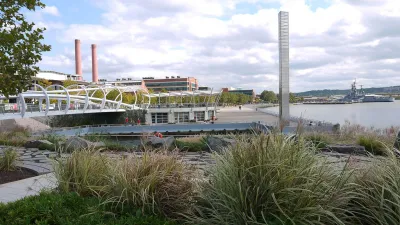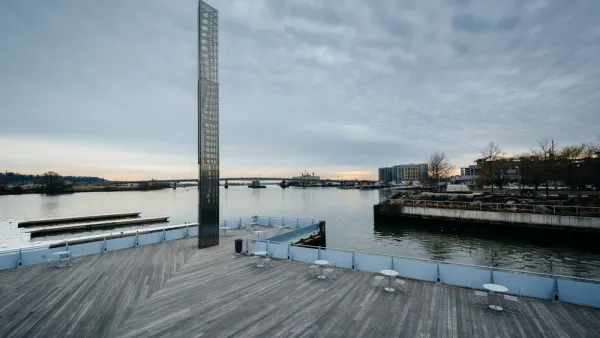Does D.C. want to be a swamp? Are waterfronts for tow parks or people? Heidi Petersen reports on a panel discussion on the past and future of Washington's waterfront at the National Building Museum.

Remembering the industrial past of riverfronts, a discussion panel of planning professionals, gathered at the National Building Museum in Washington, D.C. in June to discuss building along rivers, brought up the salient question: "Is the waterfront a back door or a front door?"
With a focus on recreational development along the Potomac and Anacostia Rivers, the panel concluded that riverfronts are important to both commerce and recreational activity.
Part of the discussion focused on the bureaucratic hurdles that must be jumped in order to implement any significant change for which there is great demand, such as non-motorized recreational boating on the D.C. waterfront. The discussion also meandered to the river as a "double-edged sword," both helping and hindering development with the potential for flooding, particularly in Prince George's County, home to the infamous "rain tax" on impervious surfaces.
The Yards, a new park on the Potomac in Georgetown, has become very popular with the public, an example of the riverfront being used as front door, above the flood zone, of course.
FULL STORY: Is your waterfront a back door or a front door

National Parks Layoffs Will Cause Communities to Lose Billions
Thousands of essential park workers were laid off this week, just before the busy spring break season.

Retro-silient?: America’s First “Eco-burb,” The Woodlands Turns 50
A master-planned community north of Houston offers lessons on green infrastructure and resilient design, but falls short of its founder’s lofty affordability and walkability goals.

Delivering for America Plan Will Downgrade Mail Service in at Least 49.5 Percent of Zip Codes
Republican and Democrat lawmakers criticize the plan for its disproportionate negative impact on rural communities.

Test News Post 1
This is a summary

Test News Headline 46
Test for the image on the front page.

Balancing Bombs and Butterflies: How the National Guard Protects a Rare Species
The National Guard at Fort Indiantown Gap uses GIS technology and land management strategies to balance military training with conservation efforts, ensuring the survival of the rare eastern regal fritillary butterfly.
Urban Design for Planners 1: Software Tools
This six-course series explores essential urban design concepts using open source software and equips planners with the tools they need to participate fully in the urban design process.
Planning for Universal Design
Learn the tools for implementing Universal Design in planning regulations.
EMC Planning Group, Inc.
Planetizen
Planetizen
Mpact (formerly Rail~Volution)
Great Falls Development Authority, Inc.
HUDs Office of Policy Development and Research
NYU Wagner Graduate School of Public Service



























